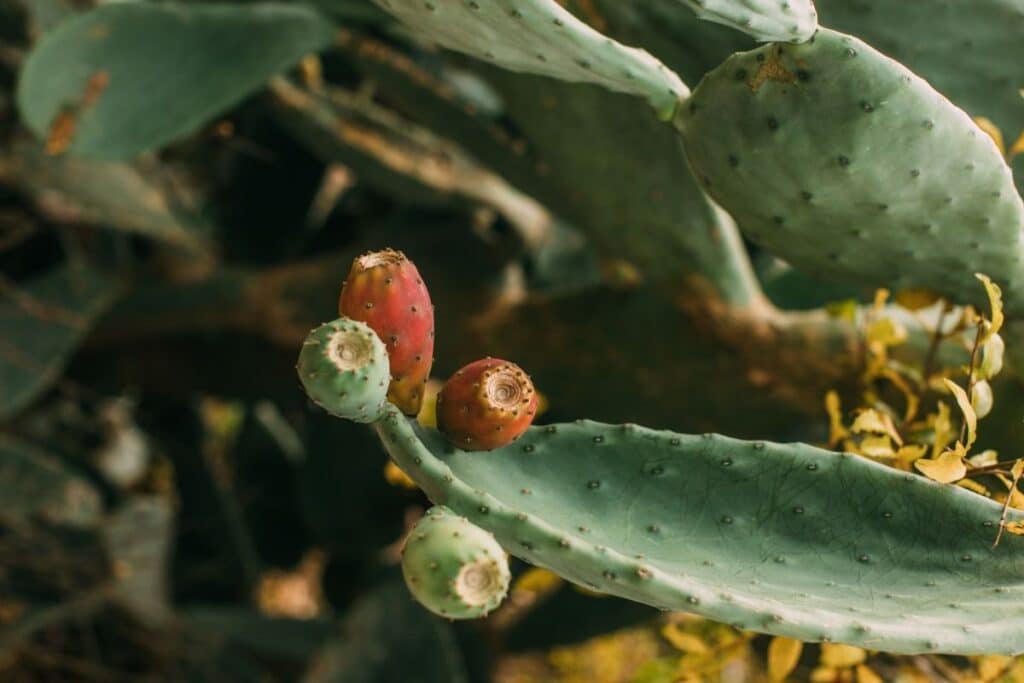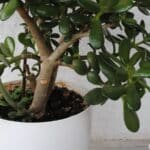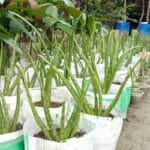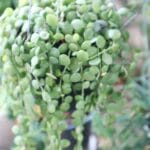Spines have always been associated with cacti. They are highly modified stems that protect these plants from animals that want to feed on them. They also prevent them from losing too much moisture in their extremely hot natural growing environment.
But as plants were cultivated for ornamental and agricultural purposes, the spines have become less prominent, almost non-existent in some cacti like the varieties and hybrids of Opuntia.
What Is A Spineless Cactus?
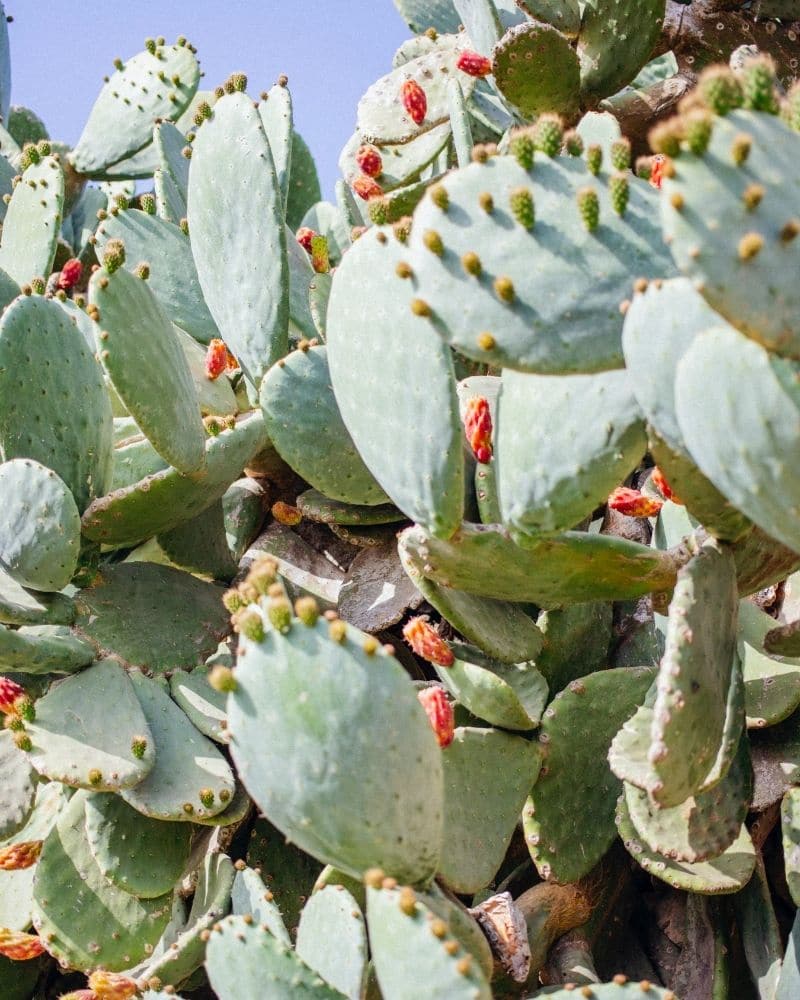
There are many cactus species that do not have noticeable spines like Lophophora and Astrophytum but the term Spineless Cactus generally refers to some varieties and hybrids of Opuntia with scientific names such as O. boldinghii, O. gosseliniana, and O. nuda.
Commonly called Spineless Prickly Pear Cactus, flat cactus and thornless cactus, Opuntia species have distinct branching pad-like stems dotted with glochids (barbed bristles) and sharp spines. The fruit borne looks like a pear, only speckled with prickles hence the name.
In the early 1900s, the notable plant breeder Luther Burbank developed hybrids by crossing and cultivating O. ficus-indica and O. tuna (Mexican Prickly Pear) which were intended as a means to provide food and create better cactus blooms (1).
Over 60 varieties were produced and all of them were spineless which eventually popularized this Opuntia genus of cacti and the name Spineless Cactus.
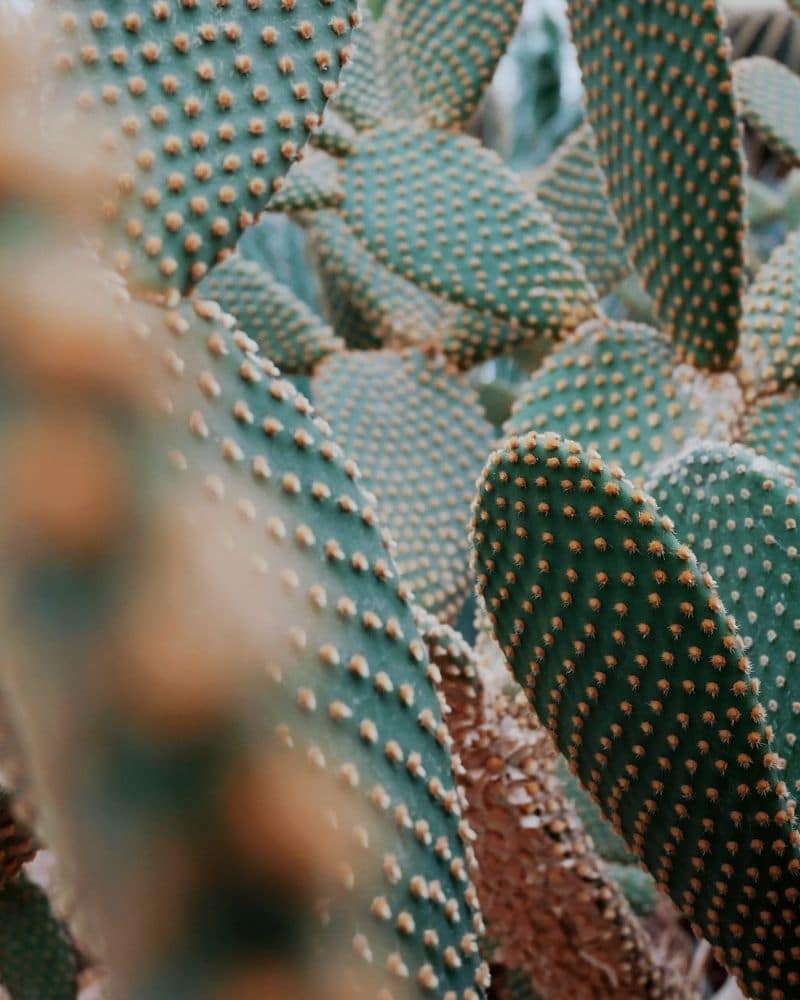
Why Are These Cacti Spineless?
Spineless Opuntia cacti were developed primarily for their “thalli” or edible stems which were used as feed resources for livestock. A xerophyte that thrives in dry, arid conditions, Spineless Cacti provided food without the added labor of removing the hard spines to make it safe for consumption (2).
Aside from the fruit of some varieties, their pads are also edible and are widely used in different cuisines in Mexico, California, and Texas. And because of its ease of propagation and adaptive growth, the spineless prickly pear became a popular ornamental plant too. Through late spring and summer, the pad-like stems bear 3 to 4 inches of striking flowers that come in yellow, orange, pink, and red, depending on the variety (3).
How to Grow Prickly Pear Cactus
Prickly pear cactus prefers well-draining soil with sandy or gravelly texture. A succulent or cactus potting mix works well, or you can create your own by mixing equal parts of potting soil, perlite, and coarse sand. Ensure the soil is not too rich or heavy, as this can lead to waterlogging and root rot.
Water prickly pear cactus sparingly, allowing the soil to dry out completely between waterings. During the growing season (spring and summer), water these drought tolerant plants when the top inch of soil feels dry to the touch. Reduce watering frequency in fall and winter when growth slows down. Avoid overwatering, as this can cause the roots to rot.
Native to the arid regions of the US, Mexico, and South America, these Opuntia cacti thrive in sunny areas. Place your prickly pear cactus in full sun for at least eight hours a day.
In hotter climates, partial shade is acceptable, but more sunlight leads to larger plants and abundant blooms in spring and summer. To encourage flowers in winter, relocate to a cooler area.
These garden plants may benefit from stake support, especially garden varieties with flat stems. This will help them grow upright and prevent them from toppling over in windy conditions or under the weight of their pads. Similarly, young plants can be more susceptible to cold winter winds, so consider providing them with temporary protection during harsh weather.
A balanced fertilizer during the spring season will help keep the plant healthy, and if prickly pear cacti were grown for their edible pad, a high-nitrogen fertilizer is recommended (3).
Propagate prickly pear cactus
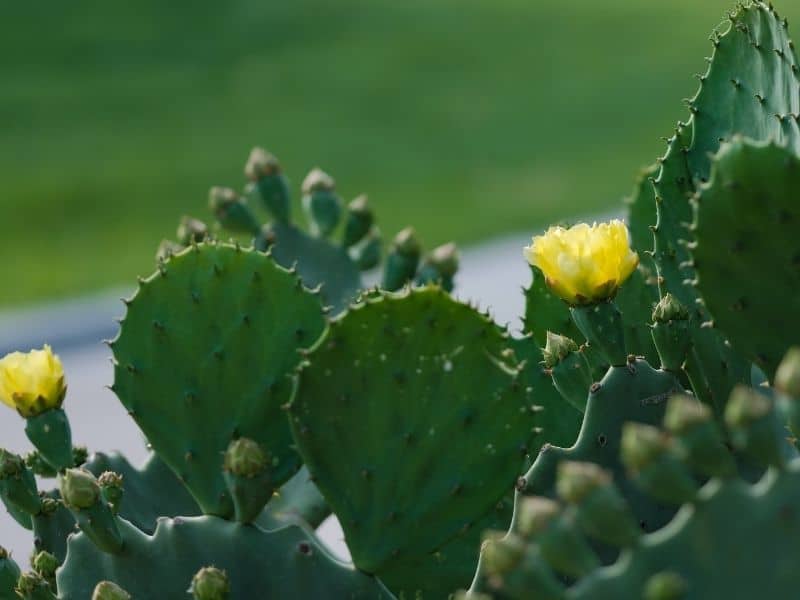
An Opuntia cactus can be grown from seeds planted in garden beds. A full-grown plant requires full sun but growing prickly pear cactus from seeds requires shade. This method may be easy but takes years to produce a plant.
Taking stem cuttings is preferable as long as they come from green pads that are no younger than 6 months old. The cuttings should be allowed to form callous in a week or two in a well-ventilated area to avoid rotting or fungal infection.
For established plants, it’s essential to wear thick gloves. Once calloused, these prickly pears can be planted in a potting mix of equal parts soil and sand or pumice.
Rock support on either side of the cuttings will help stabilize the plant and form roots better. A full-grown plant can have stems of up to 4 to 16 inches long, 9 inches wide, and 4 inches thick, and can produce fruit in 3 to 4 years or less (3).
Some Common Prickly Pear Cactus Varieties
- Indian fig opuntia (Opuntia ficus indica): This widely cultivated species boasts large, flat pads and produces sweet, pear-shaped fruits.
- Bunny ears cactus (Opuntia microdasys): Renowned for its resemblance to rabbit ears, this adorable cactus features soft, white spines and small yellow flowers.
- Eastern prickly pear (Opuntia humifusa): This North American native cactus thrives in dry, sunny areas and features flat, oval pads covered in small glochids (barbed spines). It produces bright yellow flowers in early summer, followed by edible reddish fruits.
Other Uses
Spineless cacti make striking potted plants like O. macrorhiza. They may require stakes for support, especially for the big established ones because of the shallow and narrow pot space.
In the landscape, they are popularly used as hedges and with 10 to 20 feet tall, they make excellent barriers. Popular big Opuntia cacti are O. cacanapa ‘Ellisiana’ and O. ficus-indica.
Like an Aloe vera plant, this cactus can be used as first aid. The sap from the pads can soothe wounds and the extract from young pads is used as a laxative and a medication for diabetes.
In Mexico, the Spineless cactus is an important commodity contributing to their dairy industry. When fed to cows, the stems provide a unique and desirable flavor to processed dairy products. During the drought season, the cactus can also provide moisture and food to livestock and poultry.
FAQs
How often do you water a spineless cactus?
Water spineless cactus sparingly, allowing the soil to dry out completely between waterings. Typically, this means watering every 2-4 weeks, depending on factors like temperature, humidity, and soil drainage.
Does prickly pear cactus need full sun?
Yes, prickly pear cactus (including spineless varieties) generally require full sun to thrive and produce healthy growth. Plant them in a location where they can receive at least 6-8 hours of sunlight per day.
Do spineless cactus bloom?
While spineless cactus varieties may not produce the traditional spiny blooms of other cactus species, they can still produce flowers under the right conditions. The flowers are typically colorful and attractive, adding to the ornamental value of the plant.
What are the benefits of spineless cactus?
Spineless cactus, like other cactus varieties, offer several benefits, including their low-maintenance nature, drought tolerance, and ornamental value. They can also be used in xeriscaping and desert landscaping to add texture, color, and interest to garden beds or containers.
What does an overwatered prickly pear cactus look like?
An overwatered prickly pear cactus may show signs of stress such as yellowing or wilting pads, mushy or discolored stems, or root rot. The soil may also feel consistently wet or waterlogged, indicating that the plant is receiving too much water. Adjust watering practices and improve soil drainage to prevent further damage to the cactus.
Final thoughts
In conclusion, our spineless cactus care tips are relatively simple and rewarding. With proper drainage, adequate sunlight, and infrequent watering, you can cultivate these unique and low-maintenance plants in your home or garden. Remember, even spineless varieties may have small glochids, so handle them with care while enjoying their exotic beauty.
References
Reference List:
(1) Savio, Y. Prickly Pear Cactus Production. University of California. 1989, http://sfp.ucdavis.edu/pubs/brochures/Pricklypear/. Accessed 21 March 2021.
(2) Smith, J. Luther Burbank’s Spineless Cactus. California History. 2010. https://online.ucpress.edu/ch/article-abstract/87/4/26/27366/LUTHER-BURBANK-S-SPINELESS-CACTUS. Accessed 21 March 2021.
(3) Thakuria, A. et al. Edible spineless cactus. Indian Journal of Dairy Science 73(3). 2020. P. 185-191.
Close
*image by AlexShadyuk/depositphotos

